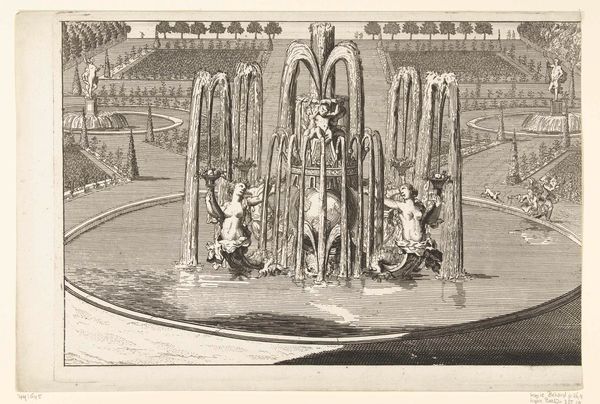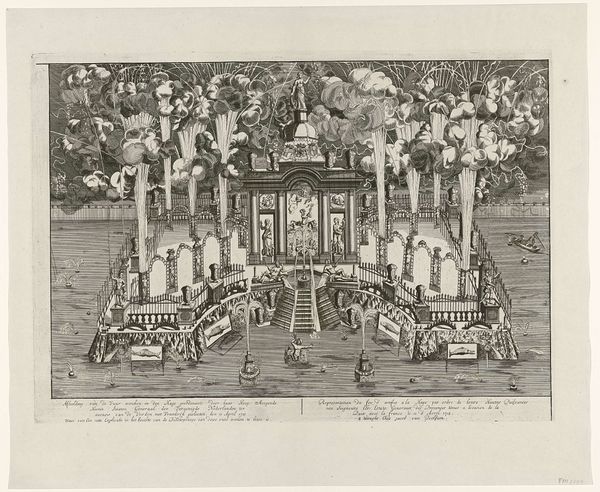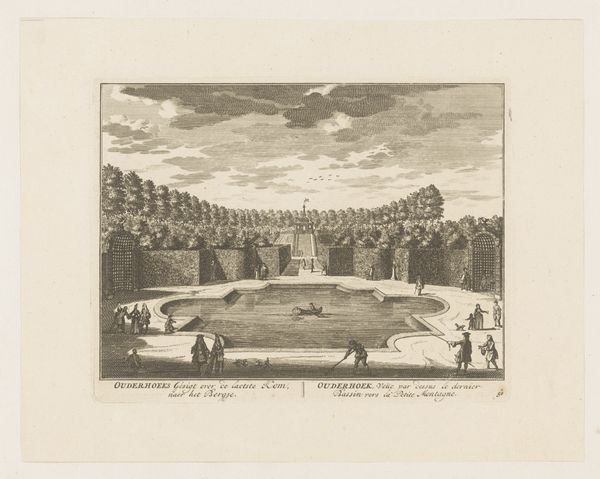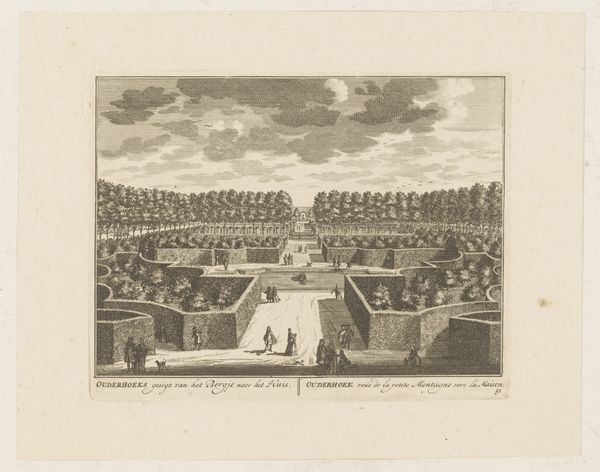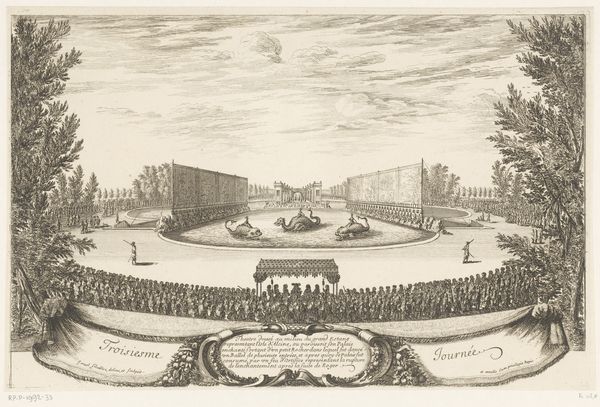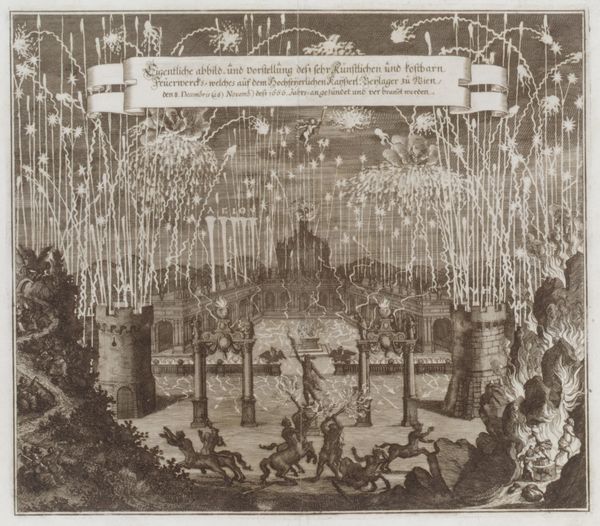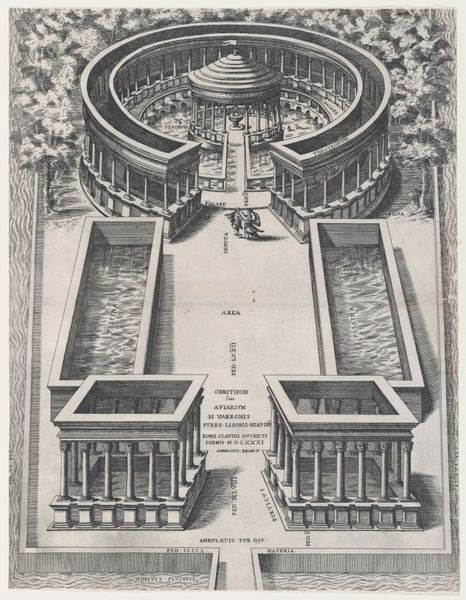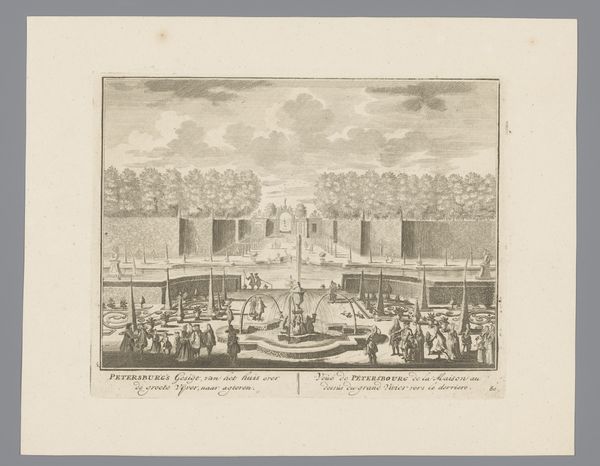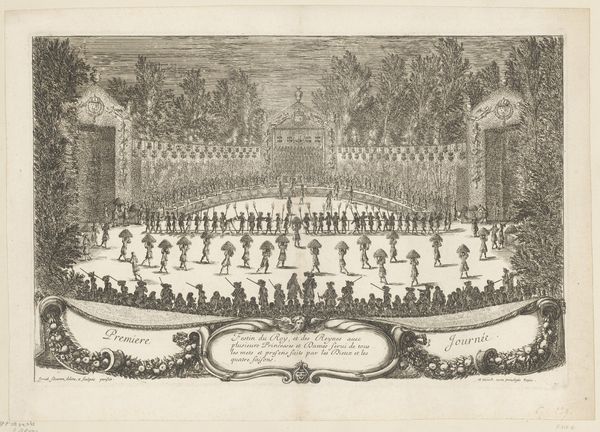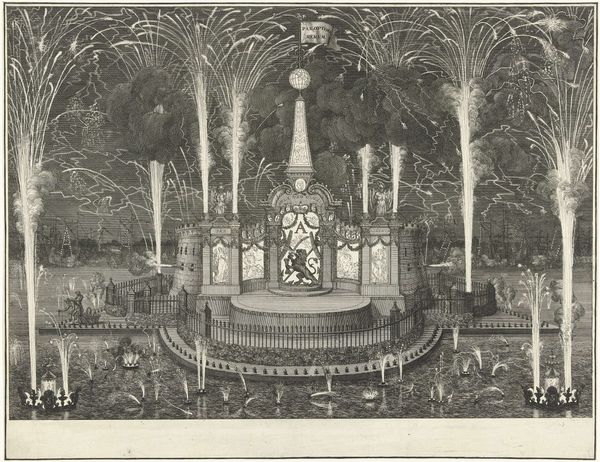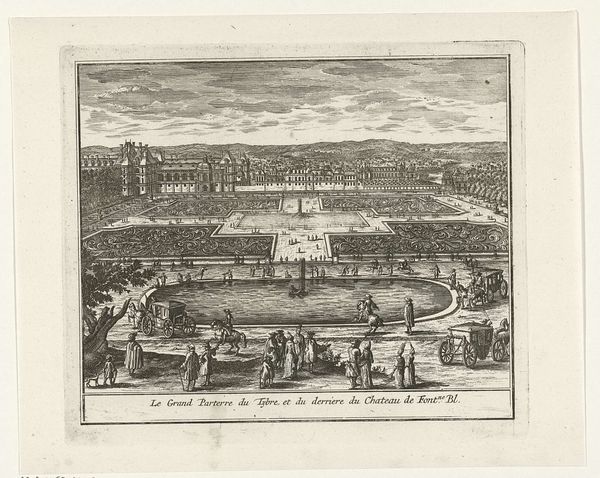
Dimensions: height 178 mm, width 272 mm
Copyright: Rijks Museum: Open Domain
Curator: I’m immediately struck by how incredibly ordered everything appears—almost dauntingly so. Editor: Yes, this print, titled “Tuin bij Voorst,” presents a baroque garden meticulously laid out using a complex system of perspective. It was created before 1800 by an anonymous artist. The technique used is engraving, which lends a remarkable level of detail to the design. Curator: I get a chill looking at it. Not a happy chill. A controlling chill. Everything is positioned just so, and the people seem like tiny props rather than actual individuals. There's something almost dystopian about this hyper-controlled nature. Does anyone really want a garden this… intense? Editor: Your reaction highlights the way in which baroque gardens epitomized control, not just of nature, but also societal order and power. The geometric arrangement of flowerbeds, paths, and water features reflects the Enlightenment's obsession with reason and control. Note how the cityscape fades into the background; perspective becomes not merely a technique, but a tool to suggest absolute mastery. Curator: Makes me want to tear up a flowerbed and plant something totally chaotic, like a pumpkin patch full of psychedelic gourds. So, do you think this engraving was more of a "hey, look what I did" show-off piece, or was it maybe a blueprint for landscaping? Editor: It likely functioned on several levels. Certainly, there was an element of display – communicating the grandeur of the estate and the owner's wealth. Simultaneously, the precision of the engraving indicates a potential for it to serve as a guide or record of the garden’s layout. Think of it as an idealized, artistic rendering rather than a precise architectural drawing. The choice of engraving itself signals something permanent. Curator: It definitely nails the whole "permanent" vibe; looking at this landscape it’s kind of unnerving—like it was set down for eternity. For me this engraving raises an interesting question about gardens—aren't they, at heart, meant to be more organic than this? Editor: That's a perfect counterpoint to take away from this encounter with this particular image; maybe art is meant to be about the beauty found in natural freedom versus forced aesthetics.
Comments
No comments
Be the first to comment and join the conversation on the ultimate creative platform.
